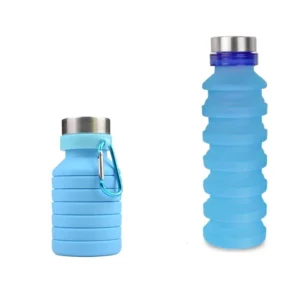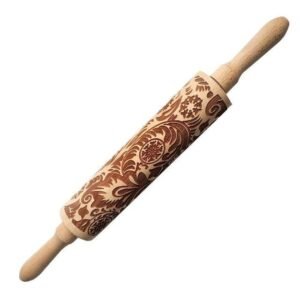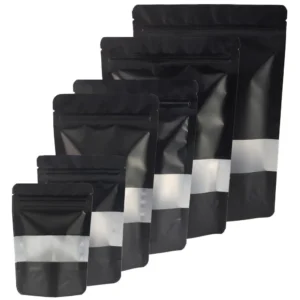- Introduction
- Understanding Frosting in Bakeries
- Vanilla Buttercream Frosting: A Classic Choice
- Diverse Frosting Flavors Beyond Vanilla
- Crafting the Perfect Bakery-Style Frosting
- Bakery Frosting Techniques and Tips
- Bakery Cakes and Their Unique Offerings
- Decorating and Customizing with Frosting
- Comparing Bakery and Grocery Store Cakes
- Addressing Common Frosting Queries
- Conclusion
- FAQs
- Frequently Linked Pages
Introduction
Are you tired of lackluster grocery store bakery frostings that leave your cakes looking and tasting bland? Upgrade to homemade buttercream for a deliciously flavorful and beautifully decorated cake. Say goodbye to boring with our homemade vanilla buttercream. In this post, we dive into the world of homemade buttercream frosting bakery, where we explore the art of creating delectable cake frostings using a homemade vanilla recipe that will have your taste buds dancing with delight. Get ready to whip up some mouthwatering treats with your mixer! Get ready to discover the secrets behind perfect bakery-style frostings with this amazing recipe that will elevate your homemade treats to a whole new level. All you need is a mixer and some vanilla extract.
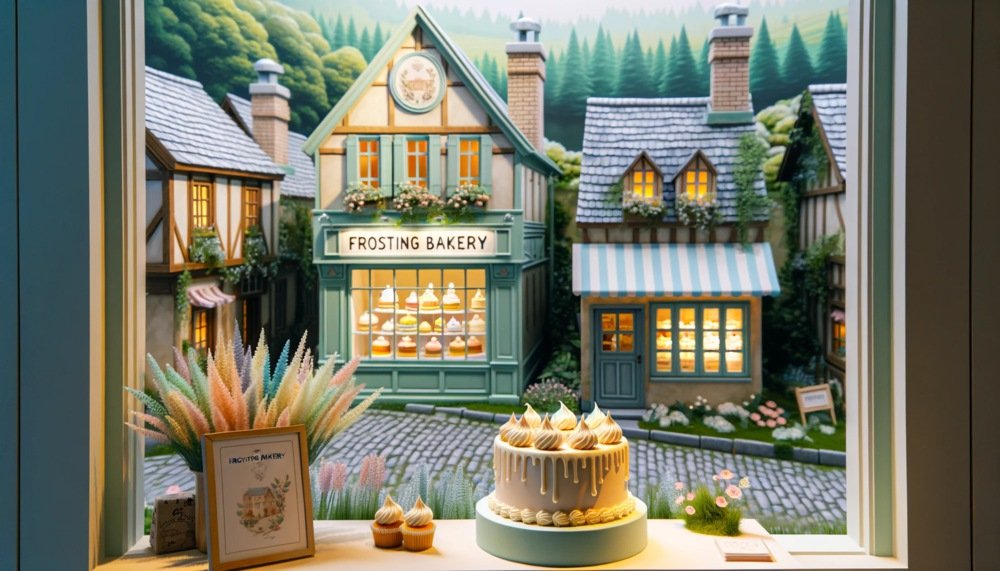
From tips on achieving the ideal texture of homemade buttercream to uncovering the key ingredients that make all the difference in chocolate buttercream frosting, we’ve got you covered. Whether you’re making homemade vanilla or experimenting with different flavors, our blog post has all the advice you need. And don’t forget to use a mixer for the best results. Whether you’re a seasoned baker or just starting out in the kitchen, our insights and techniques will help you master the art of bakery buttercream frosting like a pro. Follow our recipe, use a mixer, and add vanilla extract for the perfect result. So, if you’ve ever wondered how to achieve that light and fluffy consistency of the best bakery buttercream frosting or how to infuse flavors like a pro using vanilla extract, this post is for you. Whether you’re looking for a chocolate buttercream frosting or a vanilla buttercream frosting recipe, we’ve got you covered.
Understanding Frosting In Bakeries
Frosting is a crucial component of bakery treats that adds a delightful touch to our favorite baked goods. Whether it’s a cake, cupcake, or cookie, the right frosting recipe can take your dessert to the next level. Bakery buttercream frosting not only enhances the taste but also plays a significant role in the overall appearance of these delectable creations. Try this delicious vanilla buttercream frosting recipe today! Let’s take a closer look at frosting and its various types used in bakeries. When it comes to baking, having the perfect recipe for frosting is essential.
What is Frosting?
Frosting, also known as icing, is a sweet and creamy topping that is applied to cakes, cupcakes, cookies, and other baked goods. It is an essential part of any recipe for these treats. It serves as both decoration and flavor enhancement. The primary purpose of frosting in a recipe is to add sweetness and moisture to the baked item while providing an appealing visual appeal.
Enhancing Taste and Appearance
Frosting takes them from ordinary to extraordinary. This recipe adds an extra layer of sweetness that complements the flavors of the cake or cookie underneath. Think about biting into a fluffy cupcake with creamy buttercream frosting – it’s like tasting a delicious recipe for sugary heaven in your mouth!
Not only does frosting enhance the taste of a recipe, but it also plays a vital role in making baked goods visually appealing. From smooth and glossy finishes to intricate piped designs, frosting allows bakers to showcase their creativity and transform simple desserts into works of art.
Different Types of Frostings
Bakeries offer an array of frostings, each with its own unique characteristics and flavor profiles. Here are some popular types:
1. Buttercream: This classic frosting is made by combining butter, powdered sugar, vanilla extract, and sometimes milk or cream. It has a rich and creamy texture with a slightly sweet taste.
2. Cream Cheese: Cream cheese frosting adds tanginess to baked goods with its combination of cream cheese, butter, powdered sugar, and vanilla extract. It pairs exceptionally well with carrot cake or red velvet cupcakes.
3. Ganache: Made from melted chocolate combined with heavy cream or butter, ganache creates a glossy and decadent coating. It can be poured over cakes or used as a filling.
4. Royal Icing: Often used for intricate designs, royal icing is made from egg whites, powdered sugar, and lemon juice. It dries hard and smooth, making it ideal for decorating cookies and gingerbread houses.
5. Fondant: A smooth and pliable frosting made from sugar, water, and gelatin. Fondant can be rolled out to cover cakes entirely or shaped into decorative elements like flowers or bows.
Vanilla Buttercream Frosting: A Classic Choice
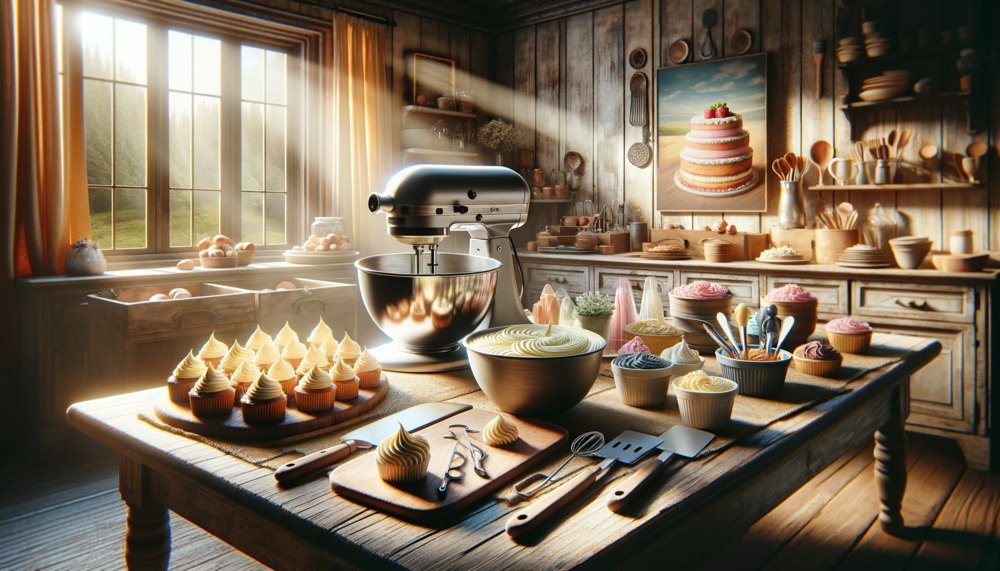
The timeless appeal of vanilla buttercream frosting in bakery delights.
Vanilla buttercream frosting is a classic choice that has stood the test of time in the world of bakery delights. Its smooth and creamy texture, combined with the rich and sweet flavor of vanilla, makes it a favorite among cake lovers everywhere. Whether it’s a birthday cake, wedding cake, or simple cupcakes, vanilla buttercream frosting adds that perfect finishing touch.
There are a few key steps to follow. Start by creaming together softened butter and powdered sugar until light and fluffy. This creates the base for your frosting. Then, add in pure vanilla extract for that unmistakable flavor. Whip everything together until you achieve a smooth and spreadable consistency.
How to make velvety smooth vanilla buttercream frosting for your cakes.
To achieve the perfect balance between sweetness and flavor in your vanilla buttercream frosting, it’s important to use high-quality ingredients. Opt for unsalted butter as it allows you to control the saltiness of the final product. Using pure vanilla extract instead of imitation will give your frosting a more authentic taste.
Another tip is to gradually add powdered sugar while mixing the ingredients. This helps prevent lumps and ensures a silky-smooth texture. If you find that your frosting is too thick, simply add a tablespoon or two of milk or heavy cream to thin it out. On the other hand, if it’s too thin, add more powdered sugar until you reach the desired consistency.
Tips for achieving the perfect balance between sweetness and flavor in vanilla buttercream.
One common mistake when making vanilla buttercream frosting is adding too much powdered sugar, resulting in an overly sweet taste. To avoid this, start with less sugar than what most recipes call for and gradually increase if needed. Taste as you go to ensure the sweetness is just right.
If you’re looking to experiment with flavors, try adding a touch of salt or a splash of citrus juice to enhance the overall taste. You can also incorporate other extracts like almond or coconut for a unique twist. However, be mindful not to overpower the delicate vanilla flavor.
A popular variation of vanilla buttercream frosting is cream cheese buttercream. By blending cream cheese into the mixture, you create a tangy and creamy frosting that pairs perfectly with carrot cakes or red velvet cupcakes.
Diverse Frosting Flavors Beyond Vanilla
If you think vanilla is the only flavor for frosting, think again! There’s a whole world of exciting flavors waiting to be explored in the realm of bakery frostings. From rich chocolate to refreshing fruit-infused options, there are countless delicious alternatives to traditional vanilla frosting that can take your cakes and baked goods to new heights.

Beyond Vanilla: Exploring a World of Exciting Flavors
Vanilla may be a classic choice, but why limit yourselfYou can add a unique twist to your homemade or store-bought treats. Imagine biting into a slice of cake topped with luscious chocolate ganache or tangy cream cheese frosting. The burst of flavor will leave your taste buds dancing with delight.
Chocolate Delights and More
One popular alternative to vanilla frosting is chocolate. Whether it’s dark, milk, or white chocolate, this decadent flavor adds richness and depth to any dessert. Pair it with a moist chocolate cake for the ultimate indulgence. But don’t stop there! Explore other delightful options like caramel, peanut butter, mint, or even espresso-flavored frostings. Each brings its own distinct taste that complements different types of cakes.
Fruit-Infused Bliss
If you’re looking for something fruity and refreshing, consider fruit-infused frostings. Raspberry buttercream adds a vibrant pink hue and a burst of berry goodness to your treats. Lemon zest-infused frosting brings a zesty tang that pairs perfectly with lemon-flavored cakes or adds brightness to vanilla-based ones. And let’s not forget about tropical delights like coconut or pineapple frostings that transport you straight to an island paradise.
Getting Creative: Incorporating Unique Flavors
Now that we’ve explored some exciting frosting flavors beyond vanilla, let’s talk about how you can incorporate these unique tastes into your baking endeavors. One simple way is to substitute vanilla extract with other flavor extracts like almond, peppermint, or even maple. This small change can make a big difference in the overall taste of your frosting.
Another option is to infuse your frostings with real ingredients. For example, you can blend fresh strawberries into your buttercream for a natural strawberry flavor or mix melted chocolate directly into your frosting for an intense chocolate experience. These techniques allow you to customize the flavor profile and create one-of-a-kind treats that will impress both friends and family.
Crafting The Perfect Bakery-Style Frosting
Creating bakery-style frostings at home can be a delightful and rewarding experience. With the right ingredients and techniques, you can achieve professional-quality results that will impress your family and friends.

Mastering the Art of Homemade Frostings
One of the most popular choices is buttercream frosting. This smooth and creamy delight adds a luscious finish to cakes, cupcakes, and other baked goods. To create the best bakery buttercream frosting at home, start with high-quality ingredients such as unsalted butter and confectioners’ sugar (also known as powdered sugar). These ingredients contribute to a rich and velvety texture that is characteristic of bakery-style frostings.
To achieve a smooth consistency in your homemade frosting, ensure that your butter is at room temperature before beginning. Softened butter blends more easily with other ingredients, resulting in a smoother texture without any lumps or clumps. When mixing your frosting, gradually add the confectioners’ sugar to avoid overwhelming your mixture with sweetness all at once.
Techniques for Creamy Textures and Vibrant Colors
To take your homemade frosting to the next level, consider incorporating some expert techniques. Creaming your butter thoroughly before adding other ingredients helps incorporate air into the mixture, resulting in a lighter and fluffier texture. You can use an electric mixer or stand mixer for this step to save time and effort.
Another technique for achieving creamy textures is to add liquid components such as milk or heavy cream gradually while mixing. This allows you to control the consistency of your frosting while ensuring it remains smooth and spreadable.
Gel food coloring works wonders compared to its liquid counterpart. Gel food coloring provides concentrated hues without altering the consistency of your frosting. Start with a small amount and gradually add more until you achieve the desired shade.
Experimenting with Flavors and Variations
While classic vanilla buttercream is a staple, don’t be afraid to experiment with different flavors and variations. Add a touch of cocoa powder for a delicious chocolate twist or incorporate extracts like almond or lemon to infuse unique flavors into your frostings. You can even mix in crushed cookies, fruit purees, or melted chocolate for added depth and complexity.
Remember that practice makes perfect.
Bakery Frosting Techniques And Tips
Piping, Spreading, and Decorating with Bakery-Style Frosting Techniques
Mastering the art of piping, spreading, and decorating is key. With these expert tips, you’ll be able to achieve professional-looking results that will impress your friends and family.
To start, let’s talk about piping. Piping is the technique of using a pastry bag fitted with various tips to create intricate designs on cakes and cupcakes. Different piping tips can produce different effects, such as rosettes, stars, or ruffles. Experimenting with different tips will allow you to unleash your creativity and add a touch of elegance to your baked goods.
Next up is spreading. Spreading frosting evenly on a cake can be challenging, but with a few tricks up your sleeve, you’ll become a pro in no time. Start by applying a thin layer of frosting called a crumb coat. This initial layer helps seal in any loose crumbs before adding the final layer of frosting. Use an offset spatula for smooth and even coverage.
Now let’s dive into decorating techniques. One popular method is using an icing comb or scraper to create textured patterns on frosted cakes. Simply run the comb along the sides of the cake for a beautiful finish that adds visual interest.
Achieving Intricate Designs Using Different Piping Tips and Tools
Having the right tools at hand makes all the difference. Here are some essential tools every baker should have:
Piping bags: These disposable or reusable bags are used for filling with frosting and attaching different piping tips.
Piping tips: There are countless shapes and sizes available for creating various designs like flowers, shells, or borders.
Couplers: These handy devices allow you to switch between different piping tips without changing the bag.
Flower nails: These nail-shaped tools are used to create beautiful flowers by piping petals onto them and transferring them onto the cake.
By experimenting with different piping tips and tools, you can unleash your creativity and take your frosting skills to the next level. Don’t be afraid to try new techniques and explore various designs to find your signature style.
Troubleshooting Common Issues When Working with Cake Frostings
Working with cake frostings in a bakery setting can sometimes present challenges. Here are some common issues you may encounter and how to troubleshoot them:
Bakery Cakes and Their Unique Offerings
Bakery cakes are a delightful treat that can satisfy any sweet tooth. These confectionary creations come in a wide variety of flavors, each showcasing unique combinations and fillings that will leave you craving for more.
Explore the Diverse Range of Bakery Cakes
There is something for everyone. From classic favorites like chocolate and vanilla to more adventurous flavors like coffee or even floral-inspired creations, bakeries offer an array of options to tantalize your taste buds. Whether you prefer a rich and decadent chocolate cake or a light and fluffy lemon cake, there is no shortage of delicious choices.
Uncover the Secrets Behind Moist and Delicious Cakes
What makes bakery cakes so moist and delicious? It’s all about the ingredients and techniques used by skilled bakers. The secret lies in using high-quality ingredients such as fresh eggs, real butter, and premium cocoa powder. These top-notch ingredients combined with precise measurements create a cake that is moist, tender, and bursting with flavor.
Bakers also employ various techniques to ensure their cakes turn out perfectly every time. From properly creaming the butter and sugar to adding just the right amount of leavening agents like baking powder or soda, every step is crucial in creating a moist and fluffy texture.
Innovative Creations That Push Boundaries
Bakeries are known for their creativity. They constantly push boundaries by experimenting with new flavors, designs, and decorations. You might come across unique creations like salted caramel chocolate cake or matcha green tea cake with red bean filling.
In addition to innovative flavors, bakeries also take pride in their artistic skills. From intricate piping techniques to handcrafted sugar flowers, these edible works of art are sure to impress both visually and tastefully.
Customization Options for Every Occasion
One of the best things about bakery cakes is that they can be customized to suit any occasion. Whether you’re celebrating a birthday, wedding, or anniversary, bakeries offer a range of options to make your cake truly special. From personalized messages and designs to themed decorations, the possibilities are endless.
Not only do bakery cakes taste amazing, but they also serve as the centerpiece for any celebration. A beautifully crafted cake can bring joy and create lasting memories for everyone involved.
Decorating And Customizing With Frosting
Decorating cakes is an art form, and one of the most important tools in a baker’s arsenal is frosting. With the right techniques and a little creativity, you can use frosting to transform a simple cake into a stunning masterpiece. Whether it’s for a birthday, wedding, or any special occasion, custom frosting decorations add that personal touch that makes your cakes truly memorable.
The art of cake decoration
Frosting is not just about spreading a layer of sweetness on top of your cake; it’s about creating intricate designs that captivate the eyes and taste buds. From delicate flowers to elegant swirls, there are endless possibilities. With the help of different piping tips and techniques, you can achieve various textures and patterns that will make your cakes stand out from the crowd.
Personalize your cakes with custom frosting decorations
One of the best things about using frosting for decoration is the ability to personalize your creations. Whether you’re celebrating a milestone birthday or throwing a themed party, custom frosting decorations allow you to showcase your creativity and make each cake unique. You can spell out names or messages using piped letters or create edible images by printing them onto sugar sheets. The possibilities are only limited by your imagination.
Tips for adding texture, color, and visual appeal
To take your frosted creations to the next level, here are some tips for adding texture, color, and visual appeal:
1. Experiment with different styles of frosting: There are various types of frostings like buttercream, cream cheese, royal icing, and fondant. Each has its own unique characteristics and can be used to achieve different effects.
2. Play with food coloring: Use gel-based food coloring to achieve vibrant shades or mix colors together to create custom hues.
3. Get creative with piping bags: Invest in different piping tips (round tip for dots or borders, star tip for rosettes or stars) and practice piping techniques to create intricate designs.
4. Consider using shortening: Adding a small amount of shortening to your frosting can help it hold its shape better, making it easier to work with when creating detailed decorations.
5. Don’t forget the sugar: Dusting your frosted cake with powdered sugar or sprinkling edible glitter on top adds a touch of sparkle and visual interest.
Comparing Bakery And Grocery Store Cakes
The options can be overwhelming. Should you go with a professionally made bakery cake or opt for one from the grocery store? Let’s take a closer look at the taste, quality, and frosting options to help you make an informed decision.
Taste: A Delicious Difference
Bakery cakes are known for their mouthwatering flavors that often leave you wanting more. These cakes are often made from scratch using high-quality ingredients, resulting in a richer and more decadent taste. From classic vanilla to exotic flavors like red velvet or salted caramel, bakeries offer a wide range of options to tantalize your taste buds.
On the other hand, grocery store cakes tend to have a more generic flavor profile. While they may still be tasty, they often lack the depth and complexity found in bakery cakes. Grocery store cakes are typically mass-produced with standardized recipes to cater to a larger audience.
Quality: Craftsmanship Matters
One of the key differences between bakery and grocery cakes lies in the craftsmanship. Bakery cakes are usually handmade by skilled bakers who take pride in their creations. They pay attention to every detail, ensuring that each cake is visually stunning and structurally sound.
In contrast, grocery store cakes are often produced on a larger scale with less emphasis on individual attention. While they may still look appealing, there can be variations in quality due to the assembly-line production process.
Frosting Options: The Icing on the Cake
Bakeries offer an extensive array of choices. From smooth buttercream to rich ganache or fondant icing, there’s something for everyone’s preference. Bakeries also excel at creating intricate designs and custom decorations that can truly elevate your cake.
Grocery stores typically provide fewer frosting options compared to bakeries. They usually stick with basic buttercream or whipped cream frosting. While these options can still be delicious, they may not offer the same level of variety and artistry as bakery cakes.
Factors to Consider
When deciding between a bakery cake and one from a grocery store, there are a few factors to consider. Firstly, budget plays a significant role. Bakery cakes tend to be pricier due to the use of high-quality ingredients and the craftsmanship involved. On the other hand, grocery store cakes are more affordable but may sacrifice some taste and customization options.
Addressing Common Frosting Queries
Working with frostings in a bakery setting can be both exciting and challenging. As a baker, you may encounter various issues that can affect the quality and consistency of your frostings.
Melting, Hardening, or Grainy Textures in Frostings
One common issue bakers face is when their frostings melt, harden too quickly, or develop a grainy texture. These problems can be frustrating, but fear not! There are solutions to get your frostings back on track.
To prevent melting frosting, ensure that your ingredients are at room temperature before starting. Cold ingredients can cause the butter or shortening to solidify unevenly, leading to a runny consistency. Avoid exposing your frosted treats to direct sunlight or high temperatures as it can cause the frosting to melt.
If your frosting hardens too quickly while you’re working with it, try adding small amounts of milk or cream to soften it up. Incorporate the liquid gradually until you achieve the desired consistency. Be careful not to add too much liquid at once as it may make the frosting too runny.
Grainy textures in frostings often occur due to undissolved sugar particles. To fix this issue, ensure that you thoroughly mix the sugar into the other ingredients until completely dissolved. If you still notice graininess after mixing for an adequate amount of time, consider sifting the powdered sugar beforehand to remove any lumps.
Proper Storage for Leftover Frostings
As a baker, you may find yourself with leftover frostings from time to time. It’s essential to store them properly to maintain their freshness and flavor for future use.
Firstly, transfer any remaining frosting into an airtight container such as a plastic tub or glass jar with a tight-fitting lid. This will prevent air from entering and drying out the frosting.
Next, refrigerate the frosting if it contains perishable ingredients such as cream cheese or fresh fruit. The cool temperature of the refrigerator will help preserve its quality for a longer time.
If you plan to use the leftover frosting within a week, storing it in the refrigerator should suffice. However, if you want to extend its shelf life further, consider freezing it. Place the container of frosting in the freezer, ensuring that it is tightly sealed to prevent freezer burn.
Conclusion
Frosting in bakeries! We’ve explored the different types of frosting, from the classic vanilla buttercream to the more adventurous flavors. We’ve also learned how to craft bakery-style frosting and discovered some handy techniques and tips. Whether you’re decorating a cake or customizing your own creation, frosting plays a crucial role in making your baked goods truly irresistible.
Now it’s time for you to put your newfound knowledge into practice. Get creative with your frosting choices and experiment with different flavors and designs. Don’t be afraid to think outside the box and add your own personal touch to your cakes. And remember, practice makes perfect, so keep honing your skills and trying new techniques. With dedication and a little bit of frosting magic, you’ll be creating bakery-worthy treats that will impress everyone who takes a bite.
FAQs
What is the best type of frosting for bakery goods?
The best type of frosting for bakery goods depends on personal preference and the specific dessert being served. Buttercream frosting is a popular choice due to its creamy texture and ability to be flavored in various ways. Cream cheese frosting is another delicious option, especially for carrot cakes or red velvet cupcakes.
How do I make my homemade frosting smooth and creamy?
To achieve a smooth and creamy homemade frosting, start by beating softened butter until it becomes light and fluffy. Gradually add powdered sugar, a little at a time, along with any desired flavorings such as vanilla extract or cocoa powder. Finally, incorporate milk or cream gradually until the desired consistency is reached.
Can I freeze frosted bakery items?
Yes, you can freeze frosted bakery items! Ensure that the baked goods are fully cooled before placing them in an airtight container or freezer bag. To prevent smudging or damage to the frosting, consider using parchment paper between layers. Thaw frozen treats in the refrigerator overnight before serving.
How long does frosted cake last at room temperature?
Frosted cakes can generally be stored at room temperature for 2-3 days if they contain perishable ingredients like dairy or cream cheese. However, if your cake has a buttercream or non-perishable frosting, it can last up to 4-5 days when properly covered with plastic wrap or stored in an airtight container.
Can I color my own frosting?
Absolutely! Coloring your own frosting allows for endless creativity and customization. Start with white buttercream or cream cheese frosting and gradually add food coloring gel until you achieve the desired shade. Remember that gel colors are more concentrated than liquid ones, so use them sparingly to avoid overpowering hues.
Frequently Linked Pages
1. Bread baking near me – Bread Baking Near Me: Sub Rosa Bakery & More In Richmond, VA!
2. Cake bakery near me open now – Cake Bakery Near Me Open Now: Satisfy Your Cravings With Fresh Delights!


